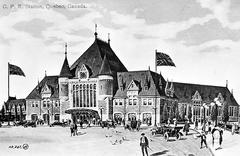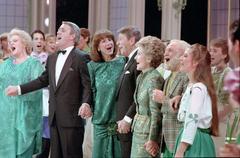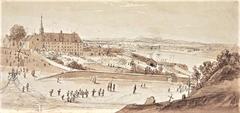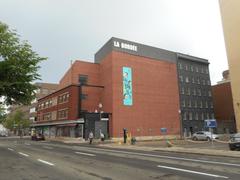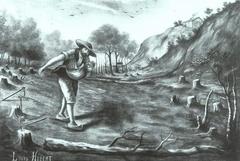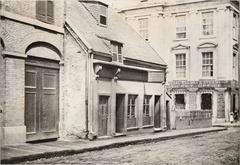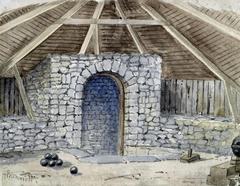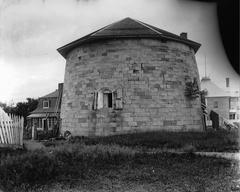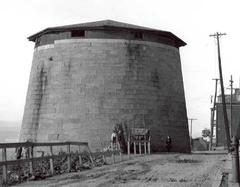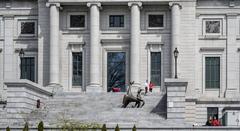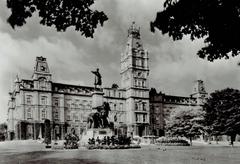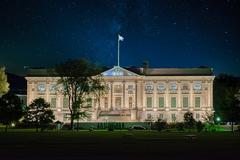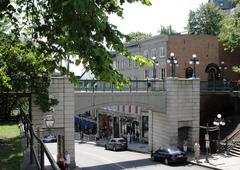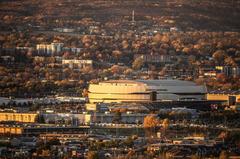
City Hall of Quebec City: Visiting Hours, Tickets, and Historical Sites Guide
Date: 04/07/2025
Introduction
Quebec City Hall (Hôtel de Ville de Québec) rises majestically in the heart of Old Quebec, itself a UNESCO World Heritage Site. This architectural gem is not only the seat of municipal government but also a monument to the city’s centuries-old French and British heritage. Whether you are a history enthusiast, architecture admirer, or curious traveler, this guide provides all you need to know about visiting Quebec City Hall—including hours, ticket information, guided tours, and tips for making the most of your visit.
Table of Contents
- Introduction
- Historical Overview and Civic Role
- Architectural Features and Heritage Status
- Visiting Hours, Tickets, and Tours
- Visitor Experience and Accessibility
- Nearby Attractions and Suggested Itineraries
- Special Events and Community Engagement
- Sustainable Tourism and Preservation
- Frequently Asked Questions (FAQ)
- Conclusion and Final Tips
- References and Further Reading
Historical Overview and Civic Role
Legacy of the Jesuit College
The present Quebec City Hall stands on the site once occupied by the Collège des Jésuites, a formative institution that shaped New France’s educational and religious landscape. After the British conquest in 1759, the location continued to serve public purposes, including time as military barracks, until the late 19th century (Ville de Québec).
Construction and Evolution
An architectural competition in 1894 selected Georges-Émile Tanguay’s design, and the new City Hall was inaugurated in 1896. Over the decades, the building has undergone expansions and restorations, notably in 1929–1930 and in the 21st century, ensuring its continued functionality and historical integrity (Ville de Québec).
Civic and Cultural Hub
Quebec City Hall has always been more than an administrative center. It hosts city council meetings, civic ceremonies, public gatherings, and cultural events, playing a central role in shaping policies and celebrating community milestones. Its archives and council chambers are the repositories of decisions that have influenced both the city and the province (Québec Cité).
Architectural Features and Heritage Status
Architectural Style
Quebec City Hall is a striking blend of Second Empire and Châteauesque architectural styles. Its mansard roofs, ornate dormer windows, and grand central clock tower echo the city’s French and British roots. The use of locally quarried stone, wrought iron railings, and intricate detailing speaks to both the region’s traditions and the building’s civic importance (UNESCO).
Notable Elements
- Symmetrical façade with a prominent entrance and clock tower
- H-shaped plan with central and lateral wings
- Steeply pitched roofs adorned with cresting and dormers
- Grand interior staircases and council chambers with stained glass and period furnishings
- Exterior stonework and iron balconies that harmonize with Old Quebec’s architectural ensemble
Heritage Recognition
Quebec City Hall was designated a National Historic Site of Canada in 1984 and is protected under Quebec’s heritage legislation. It is a key element of Old Quebec’s UNESCO World Heritage status, underscoring its architectural and historical value (UNESCO).
Visiting Hours, Tickets, and Tours
Visiting Hours
Quebec City Hall is typically open to visitors Monday to Friday, from 8:30 AM to 4:30 PM. Hours may vary on public holidays or during special events, so it is advisable to check the latest schedule on the official Ville de Québec tourism website.
Tickets and Admission
- Admission: Free entry to public areas.
- Guided Tours: Offered in both French and English; may require advance booking and a small fee. Tours usually include the council chamber, heritage rooms, and architectural highlights (Holly Melody).
Accessibility and Amenities
- Wheelchair accessible with ramps and elevators.
- Public restrooms and information desks available on-site.
- Multilingual staff; signage is typically bilingual (French and English).
Visitor Experience and Accessibility
Location
- Address: 2 Rue des Jardins, Old Quebec
- Getting There: Easily accessible on foot, by public transport, or by car. Close to major landmarks like the Château Frontenac and Notre-Dame de Québec Basilica-Cathedral (Québec Cité).
Tips for Visitors
- Best Time to Visit: Summer for festivals and mild weather, winter for picturesque decorations.
- Photography: Allowed in most public areas; check restrictions for guided tours.
- Dress: Wear comfortable shoes for exploring cobblestone streets.
Nearby Attractions and Suggested Itineraries
Quebec City Hall is a perfect starting point for exploring Old Quebec. Suggested nearby sites:
- Château Frontenac: Iconic hotel and symbol of the city.
- Dufferin Terrace: Scenic boardwalk with river views.
- Place de l’Hôtel-de-Ville: Public square for events and gatherings.
- La Citadelle: Historic fortress and museum.
- Petit-Champlain District: Quaint shops and cafés.
A walking tour might start at City Hall, proceed to Château Frontenac and Dufferin Terrace, and end at the Citadelle or Musée de la civilisation (Québec Cité).
Special Events and Community Engagement
City Hall is a focal point for major celebrations, such as Quebec’s national holiday (June 24), the Winter Carnival, and the German Christmas Market. It also hosts art exhibitions, concerts, and civic commemorations, reflecting its role as a living center of culture and community (Holly Melody).
Sustainable Tourism and Preservation
As part of a UNESCO World Heritage Site, Quebec City Hall is committed to sustainable tourism and heritage conservation. Visitors are encouraged to respect the site, minimize environmental impact, and support local businesses (Ville de Québec).
Frequently Asked Questions (FAQ)
Q: What are Quebec City Hall’s visiting hours?
A: Monday to Friday, 8:30 AM to 4:30 PM. Hours may vary on holidays.
Q: Is there an entrance fee?
A: Admission is free; guided tours may require advance booking and a nominal fee.
Q: Are guided tours available?
A: Yes, in French and English. Schedules vary; check the official website for details.
Q: Is City Hall accessible for people with disabilities?
A: Yes, the building offers ramps, elevators, and accessible restrooms.
Q: What are some nearby attractions?
A: Notre-Dame de Québec Basilica-Cathedral, Château Frontenac, Dufferin Terrace, La Citadelle, and Petit-Champlain.
Conclusion and Final Tips
Quebec City Hall is more than a government building—it is an emblem of the city’s heritage, resilience, and community spirit. Its striking architecture, central location, and vibrant schedule of events make it a must-visit destination. Plan your trip by checking current visiting hours and tour options, and consider downloading the Audiala app for audio guides and exclusive content.
For additional information, updates, and travel tips, explore the official Ville de Québec tourism portal, and follow us on social media for the latest on Quebec’s historical sites.
References and Further Reading
- Ville de Québec Tourism, 2025 (Ville de Québec)
- Québec Cité, 2025 (Québec Cité)
- UNESCO World Heritage Centre, 2025 (UNESCO)
- Holly Melody, 2025 (Holly Melody)








